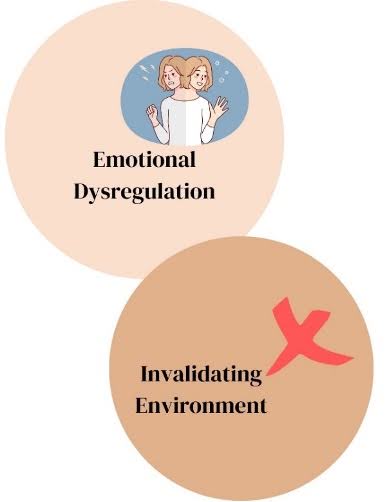our blogs
Current Post

What is Dialectical Behavior Therapy (DBT)?
Alexis Vogler, LPC, & Emma Forner
Insight Clinical Counseling and Wellness
Are you struggling to regulate your emotions? Would you like to learn how to respond to difficult situations more effectively? If you’re human, I bet you answered yes to one or both of these questions! However, sometimes emotions can be experienced too quickly, too frequently, and too intensely. If this is your experience, Dialectical Behavior Therapy (DBT) can help!
DBT can help with balancing emotions, coping with difficult situations, and improving relationships.
We used to think that DBT was similar to Cognitive Behavioral Therapy (CBT), but after a recent training that we attended, we quickly realized that DBT targets emotional dysregulation more than CBT does and is more of a less challenging and more accepting approach to working with clients. Unlike CBT, DBT places a premium on validating clients. This approach shifts away from telling clients that their thoughts and feelings are wrong. A DBT therapist believes that a client’s thoughts DO make sense given who they are and their experiences. In addition, DBT includes mindfulness and acceptance, and emphasizes the importance of finding balance between acceptance and change.
DBT utilizes dialects: two opposing viewpoints and recognizing a truth between the two so that acceptance and change can take place. For example, feeling overwhelmed but believing that feeling grateful should supersede. DBT would say that both can be true! You can feel grateful AND overwhelmed in a given moment. Thus, validating and normalizing both experiences. DBT looks at validating a feeling and experience more than questioning and/or challenging thoughts and feelings.

A DBT therapist looks at a biosocial model to identify the perspective and viewpoints of a client. How clients lack emotional regulation can be impacted by an invalidating familial or social structure. If you already struggle with regulating emotions and may be more ‘sensitive’ in nature, then your environment plays a big role in our parasympathetic nervous system and how we can handle stress. For example, if one is quick to anxiety, then a family that provides a lot of chaos may add to the anxiousness of the person. In comparison, if one struggles with anxiety and their social environment is accepting of feelings, provides and encourages calming techniques, and encourages healing activities like therapy and/or medication, then that person may feel validated in their emotions and be willing to participate in grounding/calming activities to help relieve their anxiousness.
A DBT clinician would teach and have clients implement skills that can assist them in regulating their emotions and increase interpersonal effectiveness. DBT can teach the DEAR MAN method to clients for future use for themselves or with families. DEAR MAN can be used in any situation where they may be a disagreement including work, family, relationships, and so on.

DBT also helps within problem-solving in situations where there may be a desired goal and outcome. DBT has steps to problem-solving that can help assist clients in decision-making. We feel that the best thing about DBT problem solving is choosing more than one solution and looking at them in varying perspectives, at least picking two solutions and having a back-up if the top solution is not working.

DBT has been researched to have helped in therapy with individuals diagnosed with personality disorders, mood disorders, self-injurious behaviors, suicidal thoughts, and substance use. DBT clinicians may use worksheets and psychoeducation to include clients in their own goals and healing in counseling. Worksheets can be used to assist and provide a visual for clients to become engaged and ask questions. Don’t be surprised if worksheets are brought out in session. Worksheets can be good tools to take home and review in-between sessions. Also, DBT clinicians typically don’t give ‘homework’ to clients in between sessions like CBT interventions, so worksheets or any activity is relatively done in session with the clinician.
Ask your clinician if DBT is right for you or more information on the topic! If you would like to read more information about DBT, you can visit https://www.psychologytoday.com/us/therapy-types/dialectical-behavior-therapy.
Latest Posts

The Grief Following Suicide
our blogsCurrent PostThe Grief Following SuicideCasie Johnston, LPCInsight Clinical...

Grief with Pet Loss
our blogsCurrent Post Grief with Pet LossMelinda Toth, LPCC-SCounselor, Insight Clinical...

Childrens Mental Health and Suicide
our blogsCurrent Post Childrens Mental Health and SuicideGia Bagnoli, MSW,...
Request Appointment
Contact

Copyright © 2024 Insight Clinical Counseling & Wellness, LLC. All Rights Reserved.

Our Locations
follow us
Instagram
Facebook
LinkedIn